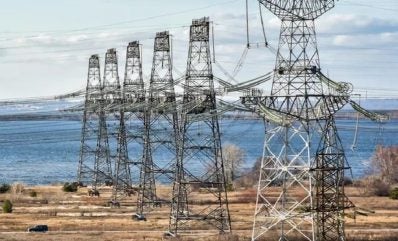
The Zaporizhia NPP (ZNPP) lost connection to its only remaining 330 kilovolt (kV) back-up power line for a second time in October, International Atomic Energy Agency (IAEA) Director General Rafael Mariano Grossi said in his latest update. This again left the facility dependent on one single source of the external electricity it needs for reactor cooling and other key nuclear safety and security functions.
ZNPP said on its Telegram channel that the high-voltage power supply line to ZNPP, Ferroalloy-1, had been turned off automatically for unknown reasons and that the causes of the incident were being established. “The NPP’s own needs are powered by the 750 kV Dneprovskaya line. No violations of the limits and safety conditions have been recorded at the moment,” the statement noted.
The IAEA team stationed at the plant was informed that the power line was disconnected for more than 26 hours due to unspecified damage on the other side of the Dnipro River. It took place three weeks after another disconnection of the same line. In both instances, the six unit ZNPP continued to receive electricity from its sole 750 kV line. Before the military conflict, the plant had four 750 kV and six 330 kV lines available. All six units are currently in cold shutdown.
“What once would have been unthinkable – a major nuclear power plant suffering repeated off-site power cuts – has become a frequent occurrence during this devastating war. The situation is clearly not getting any better in this regard. The nuclear safety and security situation at the Zaporizhia NPP remains highly precarious,” Grossi said. The IAEA team has continued to hear explosions every day, although no damage to the ZNPP was reported.
The IAEA team members conducted walkdowns across the site as part of their activities to assess nuclear safety and security at the plant, including observing the testing of an emergency diesel generator (EDG) of reactor unit 4. In meetings with plant staff, they discussed other important topics, such as the modernisation of control systems for the site’s EDGs as well as updated procedures related to the ZNPP’s radiation protection programme.
As a follow up to their visit the previous week to the cooling tower damaged by a major fire in August, the team members also discussed with ZNPP how it will assess the extent of the damage, including the selection of an external contractor to carry out this work.
Meanwhile, Rosatom Director General Alexey Likhachev told RT that Ukraine continues to ignore the safety standards of NPPs. “The Kyiv regime absolutely ignores the issue of security, no matter what its leaders say. I tell you responsibly, provocations continue, shelling continues in the immediate vicinity of the Zaporizhia nuclear power plant, and both UAVs [unmanned aerial vehicles – drones] and missiles are shot down over Kursk,” Likhachev noted.
He pointed out that Ukraine shows a special cynicism in relation to the satellite cities of the NPPs – Energodar in Zaporizhia and Kurchatov in the Kursk region. Kyiv is intimidating their residents and shelling the city’s infrastructure, causing injuries and deaths.
Likhachev said Russia will ensure the complete safety of both Zaporizhia and Kursk NPPs and create conditions for the effective work of their personnel. He stressed again that now the main threat remains direct shelling and attacks on station facilities and the infrastructure of their satellite cities. He said Rosatom is proud of ZNPP employees who continue to work in difficult conditions. ALthough the plant’s reactors are in cold shutdown, the staff supports the regular operation of all other NPP services.
The same day, the mayor of Energodar, Eduard Senovoz, said that one of the city’s gas pipelines had been damaged by shelling complicating the start of the heating season in Energodar. On October 21, it became known about the shelling by the Armed Forces of Ukraine (APU) of the satellite city of Zaporozhye NPP-Energodar, according to the head of the settlement, as a result of the shelling.






